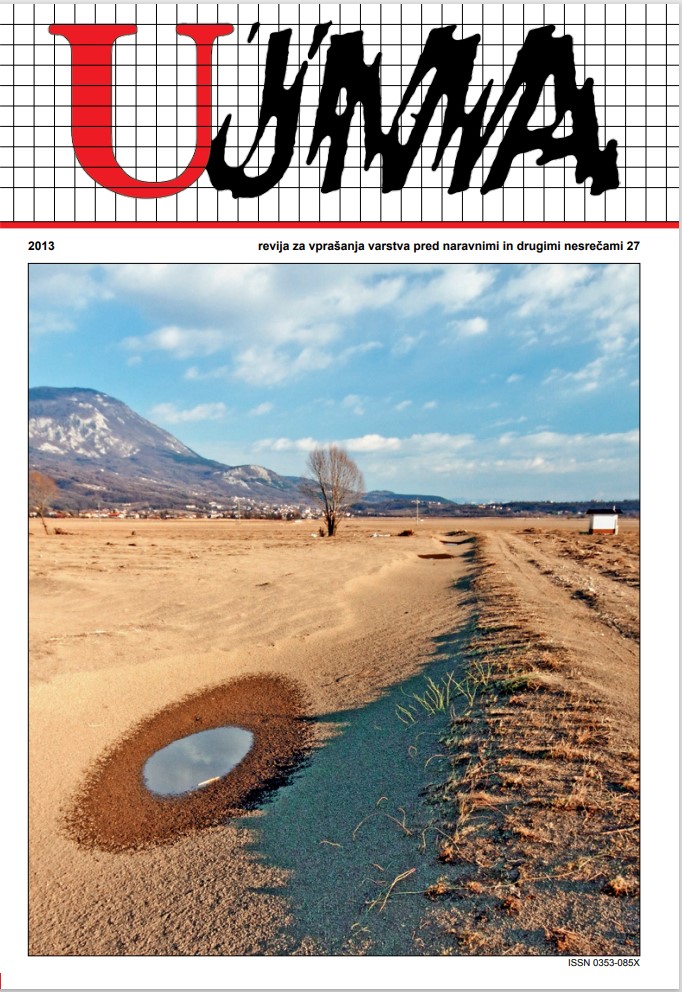KNOWLEDGE OF EMERGENCY CALL OPTIONS AMONG DEAF AND HARD OF HEARING PEOPLE
Abstract
In addition to traditional telephony, countries have to promote the use of new technologies providing 112 emergency services. It is important that the access to the 112 emergency calls is also made possible for persons with special needs, such as deaf and hard-of-hearing people. Along with the 112 voice call, deaf and hard-of-hearing persons can also send SMS text messages, contact the regional notification centre through WAP services, or through the call centre for persons with hearing impairment or may ask for the help of other people who are nearby. Based on a questionnaire completed by a sample of 113 deaf and hard-ofhearing persons, it has been established that they are well familiar with the 112 emergency number services through text messages, and know exactly which information has to be given. Most of the respondents would decide for emergency SMS services, 60% of the respondents are also familiar with this option. This indicates that the introduction of the SMS emergency call option was a useful acquisition to help deaf and hard-of-hearing persons.
References
Bauman, J., Holec, D., 2009. Klicni center za osebe z okvaro sluha: eksperimentalni projekt v letu 2009. Ko govorijo roke. 2009, 3.
Council Decision of 29 July 1991 on the introduction of single European emergency call number –91/396/EEC.
Direktiva evropskega parlamenta o univerzalnih storitvah in pravicah uporabnikov v zvezi z elektronskimi komunikacijskimi omrežji in storitvami (2002/22/ EC).
European Commission, 2012. The European emergency number 112, http://ec.europa.eu/digital-agenda/en/112-your-country.
Hernja, N., Werdonig, A., Brumec, M., Groegn, S., Ropert, D., Varžič, I., 2010. Priročnik za delo z gluhimi in naglušnimi otroki. Ljubljana: Zavod Republike Slovenije za šolstvo, 22-4.
Košir, S., 1999. Sluh: naglušnost in gluhost. Ljubljana: Zveza gluhih in naglušnih Slovenije, str. 5.
Ministrstvo za obrambo, 2012. 11. februar – mednarodni dan številke SOS 112, http://www.mo.gov.si/si/medijsko_sredisce/novica/article/1328/6127/59e1258687/.
Planet siol.net, 2012. Poleg klica v sili zdaj tudi SMS na številko 112, http://www.siol.net/novice/tehnologija/telekomunikacije/2012/02/sms_112.aspx.
Radio televizija Slovenija, 2013. 112-lani več kot 1000 sms-ov na pomoč, http://www.rtvslo.si/mmc-priporoca/112-lani-vec-kot-1-000-sms-ov-na-pomoc/300568.
Slabe, D., Kovač, M., 2006. Klic na 112. V: Ahčan, U. Prva pomoč: Priročnik s praktičnimi primeri. 1. izd. Ljubljana: Rdeči križ Slovenije, 49–55.
Slabe, D., Kovač, M., (2008). Klic regijskega centra za obveščanje. V: Ahčan in sod. Prva pomoč, priročnik za bolničarje. Rdeči križ Slovenije: Ljubljana.
Slabe, D., Medja, M., 2009. Poznavanje evropske številke za klic v sili 112. Ujma (23), 170–175.
Tabaj, A., 2010. Informacijske in komunikacijske tehnologije za invalide v procesu zaposlitvene rehabilitacije. Ljubljana: Univerzitetni rehabilitacijski inštitut Republike Slovenije: Razvojni center za zaposlitveno rehabilitacijo, 13–14.
Tavčar, B., Švab Tavčar, A., 2009. WAP112, tekstovni klic v sili na 112. Ujma (23), 325–328.
Tavčar, B., Švab Tavčar, A., 2011. SMS112, besedilni klic v sili na 112. Ujma (25), 163–165.
Uprava Republike Slovenije za zaščito in reševanje, 2012. Klic v sili 112, https://www.gov.si/teme/klic-v-sili/.
Vertot, N., 2010. Mednarodni dan invalidov 2010. Ljubljana: Statistični urad Republike Slovenije, http://www.stat.si/novica_prikazi.aspx?id=3606.
Zakon o elektronskih komunikacijah (2012). Ur List RS 109, http://www.uradni-list.si/1/objava.jsp?urlid=2012109&stevilka=4315
Zveza društev gluhih in naglušnih Slovenije (2009a). Klic v sili 112 za gluhe in naglušne, http://www.zveza-gns.si/slovenija/klic-v-sili-112-za-gluhe-in-naglusne.
Zveza društev gluhih in naglušnih Slovenije (2012a). SMS 112, http://www.zveza-gns.si/slovenija/sms112.
Zveza društev gluhih in naglušnih Slovenije (2012b). Gluhota, http://www.zveza-gns.si/o-zvezi/gluhota.
Downloads
Published
Versions
- 18-11-2025 (2)
- 19-01-2024 (1)
Issue
Section
License

This work is licensed under a Creative Commons Attribution-NonCommercial-NoDerivatives 4.0 International License.
The articles are made available to the public under Creative Commons Attribution-NonCommercial-NoDerivatives 4.0 International (CC BY-NC-ND 4.0).


